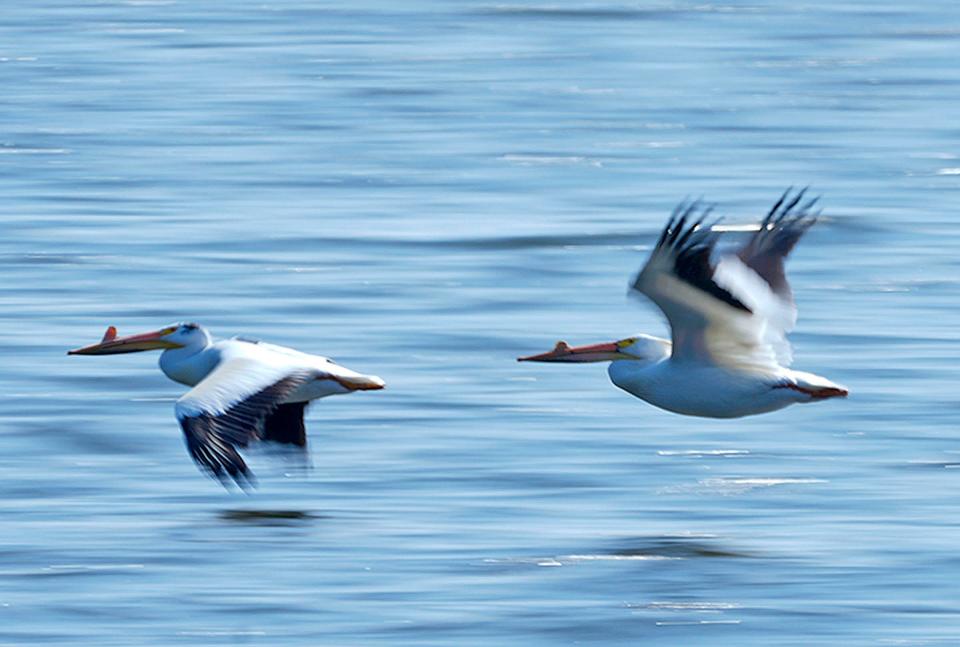The Great Lakes were named the first freshwater 'Hope Spot,' here's why that matters
- Oops!Something went wrong.Please try again later.
Earlier this year, the Great Lakes were named the first freshwater "Hope Spot" − special places around the world that are recognized as critical to the health of the ocean.
Hope Spots are nominated by local organizations, businesses and conservationists and then chosen by Mission Blue, a conservation nonprofit focused on protecting the oceans. The Great Lakes were nominated by the Shedd Aquarium in Chicago.
There are 155 spots around the world with this special designation, covering more than 22 million square miles of water. They include places like the Galápagos Islands, the Atolls of the Maldives and Florida's Gulf Coast.
And as of May, the Great Lakes are on that list.
The designation signals that the Great Lakes, alongside other water bodies around the world, are not only important, but places to look to for hope in restoring and protecting them.
So, what do the lakes have to do with the health of the ocean?
"It's inextricably connected," said Sylvia Earle, oceanographer and founder, president and chairman of Mission Blue.
"It doesn't matter where on the planet you are, because it all is one interacting system."

The Great Lakes hold about 90 percent of the freshwater in the U.S. and 20 percent of the world's surface freshwater. The lakes cover about 95,000 square miles, spanning 750 miles from west to east and supply drinking water to more than 40 million people. They are directly connected to the Atlantic Ocean via the St. Lawrence Seaway.
And while their importance is rarely contested, there are a number of historical threats that have left their stain on the massive freshwater system, such as agriculture pollution, invasive species, habitat loss, overexploitation and flow alterations.
New threats are also on the rise. PFAS (forever chemicals), harmful algae blooms and climate change are all leaving their mark.
Microplastics − plastic that has broken down into tiny pieces − also threaten the health of humans and aquatic life. Earle said they are so pervasive, they've even shown up in air samples she's taken in Antarctica.
"Every breath you take, every drop of water you drink you're connected to the ocean," Earle said. "But now we know every drop, every breath you take has plastic (in it)."
Hope Spots don't need to be in great condition when they are nominated, but it's the commitments from organizations to protecting these sites that helps get them the designation, Earle said. After an application is submitted, the nominations get reviewed by scientists with the International Union for Conservation of Nature, a union made up of organizations that serve as a global authority on the natural world. The ultimate decision is made by Mission Blue, and then the nominating groups and organizations are expected to serve as champions.
More than 20 partner organizations around the region supported the Shedd Aquarium's nomination, including Discovery World Science and Technology Museum in Milwaukee and SC Johnson headquartered in Racine. These organizations committed to collaborating on efforts to restore and protect the basin.
The special places become a part of a "network of hope," she said, where scientists and conservationists can work together as well as share experiences and stories.
Hope spot designations are helping fulfill the 30x30 initiative put forth by the Biden administration − the goal to protect 30 percent of the land and water by 2030.
According to Earle, this is "a good start," but not enough since humans have been taking from nature throughout history.
"We have to really seriously embrace the awareness that everything we care about depends on a planet that works in our favor," she said.
"We want to tip in the right direction instead of the wrong direction."
Caitlin Looby is a Report for America corps member who writes about the environment and the Great Lakes. Reach her at clooby@gannett.com or follow her on Twitter @caitlooby.
This article originally appeared on Milwaukee Journal Sentinel: Great Lakes are a 'Hope Spot,' here's why that matters

